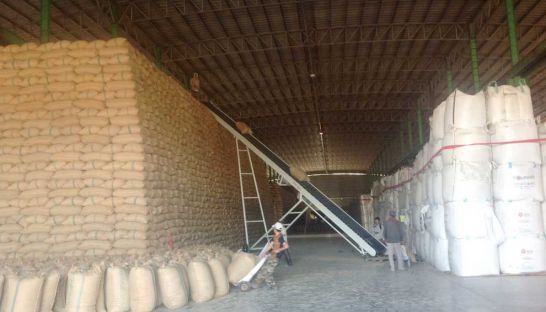Stocking up for the low season
Stocking up for the low season
Three months after it began buying up rice stock, the Cambodia Rice Bank (CRB) has acquired about 20,000 tonnes of paddy and 7,000 tonnes of milled rice, a representative from the bank said on Friday.

According to Phou Puy, chairman and CEO of the CRB, the stock is valued at close to $12 million and will be accessible to millers during the months of April and May when paddy supply is seasonably low.
“Our operation is going on well. We predict that for 2015-2016 harvest season, our stock capacity will be triple the of what it is now,” Puy said.
The CRB is a private sector initiative established by local millers aiming to better manage market fluctuations in Cambodia’s rice industry.
The bank is attempting to stem the flow of informal, or over-the-border, paddy trade during the harvest season when paddy supply peaks and it aims to have rice on hand for millers to access during the low season when supply is low.
“Every year, millers always find it difficult to buy paddy during April to June and I think at that period, we can sell all our stock pile,” Puy added.
Fitted with silos, rice dryers and storage sheds, the $30 million rice bank began operating in Battambang province in August last year.
From October to December – during harvest season for fragrant rice – the CRB began collecting rice from farmers in Battambang, Banteay Meanchey, Pursat, and Siem Reap.
Lim Bunheng, CEO of rice export company Loran Group, said that millers often run out of funding during the harvest season and were unable to collect all available rice which meant much of it was lost over the border to neighbouring countries.
“The rice bank will be a major place where millers can get fragrant paddy when the shortage time arrives,” he said. “Now we have another option so that once the bank can sell paddy at a suitable price – it will be very much benefit for miller.”
David Van, senior adviser of the Cambodia Rice Federation, said despite some hold ups from individual investors, the private sector has been able to venture into territory where the government and donors had failed. “At least the private sector gets things moving with its own limited resources,” he said. “Most countries have their agricultural sector fully subsidised by their governments but not in Cambodia and thus the private sector must fend for itself first.”
Van also called on the government and donors to work more closely with the private sector in development of their proposed “warehousing receipt” concept that uses paddy stock as collateral for loans.













